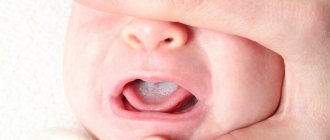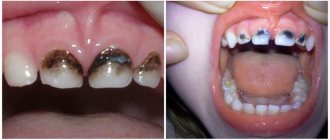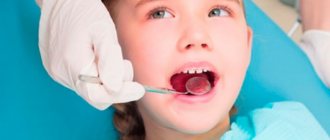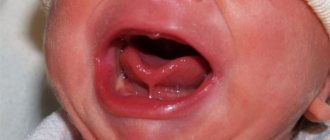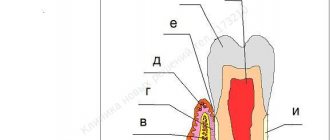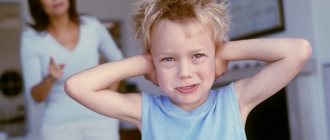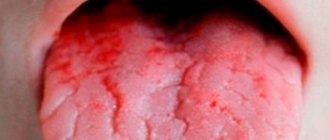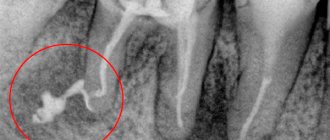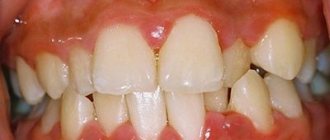A 3-year-old girl died in kindergarten during a walk.
Initially, it was assumed that the baby, due to an oversight by her teachers, froze in a snowdrift. However, a preliminary forensic examination showed that the girl died from cardiac dysfunction, which her parents did not seem to suspect. Unfortunately, childhood illnesses, like those of adults, often develop gradually. What subtle symptoms may indicate dangerous, hidden diseases?
Click to enlarge
The story is told by candidate of medical sciences, pediatrician of the highest category Marina Galitskaya .
Heart diseases
— The main cause of sudden death in both children and adults is heart disease. The main danger of heart diseases is that they are often asymptomatic until they reach critical conditions. However, there are always signs of cardiac problems that should alert parents.
Almost all children with heart disease periodically (or constantly, which is why this is often perceived as an individual characteristic) experience pallor, weakness, and increased fatigue. A child with heart problems sits down to rest, catch his breath, and come to his senses. Many of them are stunted in height and weight.
Article on the topic
Heart disease is not a death sentence. How children with cardiac pathologies are now being saved Another characteristic sign of heart problems is blue lips (due to improper functioning of the heart, the blood does not receive the required amount of oxygen) and nails (due to dysfunction of the blood flow, the blood does not reach small vessels - capillaries).
The most alarming sign is fainting (by the way, the media reported that the girl who died in kindergarten also experienced fainting). Loss of consciousness usually indicates life-threatening rhythm disturbances, which is why cardiologists call fainting a distress signal that should prompt immediate medical attention.
Heart disease in children: what parents should be wary of.
1. In 2021, 211 children died in physical education lessons. If you subtract vacations, holidays and weekends from 273 school days, it turns out that every day a child died in one of the Russian schools. From a medical point of view, sudden death in children can be caused by various reasons - both cardiological with the development of acute heart failure, and diseases of the central nervous system. Parents may not even know that their child has such a problem. However, everything can be diagnosed with a timely visit to a pediatric cardiologist.
2. According to the medical examination plan, at 1 year, then at 3 years (before kindergarten) and 6–7 years (before school), children must undergo a medical commission, which includes a cardiologist, who is obliged to refer the child for standard studies - EchoCG and ECG. EchoCG (or ultrasound of the heart) allows you to evaluate the functioning of the heart, its anatomical structure, the contractility of the ventricles, and measure the pressure in the cavities, which is necessary to exclude congenital and acquired anomalies of the heart and lungs. An ECG analyzes the functioning of the conduction system of the heart and identifies its disorders, including life-threatening ones. If a child is suspected of having an arrhythmia, the doctor will refer him for further examination - daily ECG monitoring and consultation with a pediatric arrhythmologist.
3. With some undiagnosed heart defects, tragedy can occur even with average physical exertion. But it’s even more dangerous when under-examined children, trying to earn points before admission, decide to pass the GTO standards, which require absolute health and serious preparedness. Therefore, doctors insist that before passing the GTO standards and competitions, children undergo a full cardiac examination (echocardiography, stress ECG, daily ECG monitoring) to exclude life-threatening disorders in the heart.
4. Often, after suffering from viral diseases, myocarditis (inflammation of the heart muscle) and inflammation of the blood vessels of the heart (aortitis, coronaritis) develop. This leads to a decrease in the contractility of the myocardium, disruption of its blood supply (including the conduction system of the heart), to the development of heart failure and life-threatening arrhythmias. Therefore, after recovering from a viral infection (especially a severe one), the child should be released from physical education for two weeks and must undergo an ECG.
5. The causes of fainting can be associated with both cardiac dysfunction (cardiac arrest, vegetative-vascular dystonia), and with pathology of the central nervous system (tumors, epilepsy), diseases of the endocrine system (hypoglycemia, diabetes mellitus), abnormal development of the spine (Kimmerle anomaly) etc.
6. The cardiovascular system of a rapidly growing child's body is extremely vulnerable. In adolescence, many children develop vegetative-vascular dystonia of the vagotonic type - a condition in which there is a tendency to hypotension. A sharp drop in blood pressure can lead to fainting, in which unsuccessful falls can cause fatal brain damage. Therefore, if a child complains of dizziness, headache, or periodically loses consciousness, be sure to consult a specialist and undergo the necessary examination.
7. Another problem is the special nutrition system that teenagers who are concerned about their figure choose. They eliminate fats from the diet and replace meals with protein shakes. However, the exclusion of one food component provokes the early and rapid development of atherosclerosis of the coronary arteries, leading to myocardial ischemia, the development of acute heart failure and sudden cardiac arrest.
8. There are many children who have had heart surgery at an early age. But they lead a normal life. They participate in sports clubs, as they say, without fanaticism, for their health. But to practice, they, like other children, need to get a certificate from a cardiologist.
9. What parents should be wary of:
- Blue discoloration of the nasolabial triangle and the area around the eyes is a sign of deterioration of venous outflow and insufficient blood oxygen saturation.
- Pain in the heart, shoulder blade, left arm.
- Persistent hypothermia is a low body temperature.
- Shortness of breath, which occurs due to blood stagnation and oxygen starvation.
- Cold palms and feet.
- Fatigue after physical activity - the child sits down, sighs, and complains of palpitations.
- Fainting.
10. It must be remembered that hypertension is rarely asymptomatic. Children complain of headaches, dizziness, weakness, fatigue, blurred vision or spots before their eyes. Children with hypertension often have sharply reduced vision. It is very important not to attribute these complaints to overwork, but to consult a doctor in time. The initial forms of childhood hypertension are corrected without medication. Results can be achieved if you normalize the child’s weight, daily routine (the student needs to get enough sleep, he should not get tired or overexcited) and nutrition. It is very important to choose suitable physical activity. The best results are achieved by cardio training (fast walking - 30-40 minutes daily, swimming, cross-country skiing, cycling).
11. But strength training for children with hypertension is absolutely contraindicated. If these measures do not produce results, medications are prescribed, the doses of which are selected individually and can only be discontinued by a doctor.
12. Most often, increased blood pressure worries children in adolescence (13–16 years). Blood pressure standards in children vary depending on age, weight (overweight children have higher blood pressure), height (short children have lower blood pressure) and gender (boys have higher blood pressure than girls). In children under 14 years of age, the average pressure should not exceed 120/80 mm Hg. Art., for older ones – 135/85 mm Hg. Art. Make an appointment with the cardiologist of the Children's Department, Anna Yuryevna Kozhina, by phone. 43-03-03 and 41-03-03 or
Pneumonia
This is one of the leading causes of child mortality. Unfortunately, pneumonia is very often diagnosed too late, on the 6-7th day of illness, when irreversible complications occur.
The symptoms of the disease are similar to the symptoms of ARVI, so if the temperature is low, parents do not take any measures, but simply wait for the child to recover. Pneumonia can occur without coughing or wheezing in the lungs, so even a pediatrician can miss it at home.
Article on the topic
Dangerous for babies. How to avoid pneumonia? Remember: if the child is weak, pale, sweats a lot, complains of chest pain when breathing and coughing, first of all you need to rule out pneumonia.
Another reliable symptom of pneumonia, by which the disease can be recognized even at an early stage, is shortness of breath.
The “gold standard” for diagnosing pneumonia includes general and biochemical blood tests, urinalysis, and chest x-ray.
How to treat fever in a child who has previously had febrile seizures?
If the child does not have an increase in temperature during illness or after vaccination, it is not recommended to give antipyretic drugs! This does not reduce the risk of an attack.
If the temperature has risen, medications to reduce it make you feel better overall, but do not help with attacks.
The harm from anticonvulsants for the prevention of febrile seizures outweighs the benefits; they are almost never prescribed.
If a child’s febrile convulsions are prolonged, at the beginning of the attack it is recommended to administer a drug from the benzodiazepine group in the form of an enema, a spray in the nose or a gel on the cheek. Unfortunately, none of these forms are registered in Russia. Therefore, if an attack lasts longer than 5 minutes, an emergency doctor may give an injection of such a medicine.
For antipyretic drugs, children can be given ibuprofen at a dose of 10 mg/kg every 8 hours or paracetamol at a dose of 15 mg/kg every 6 hours. Don't give children aspirin!
Diabetes
The main signs of type 1 diabetes are sudden weight loss and severe thirst, which forces children to drink a lot and often run to the toilet. The onset of the disease is characterized by a change in appetite - the child may either refuse food or lash out at it (unfortunately, this is often attributed to the needs of a growing body). Diabetes is often accompanied by skin diseases - boils, eczema, fungal infections of the skin and nails.
If the diagnosis is not made in time (and this happens quite often, since there are no obvious signs of the disease), diabetic ketoacidosis and the accompanying disorder of consciousness can develop, up to the onset of coma - a condition in which the child can die.
No diabetes! What influences the development of the disease in children Read more
What is a fever?
The normal temperature for babies and children is around 36.4°C, but this may vary slightly from child to child.
- Low-grade fever is an increase in temperature from 36.7 to 38 degrees.
- Fever is a high temperature of 38 C or more.
The following symptoms appear when you have a fever:
- Your baby's forehead, back, or stomach feels hotter than usual.
- The surface of the skin becomes sweaty (moist) and sticky.
- The baby's cheeks and sometimes forehead turn red.
To measure temperature, it is best to use a safe digital thermometer without mercury filling.
Epilepsy
The disease is popularly considered extremely rare. In fact, epilepsy occurs quite often in children in the first year of life, but the first signs of this disease are so short-lived that they often go unnoticed.
The leading symptom of the disease is non-convulsive generalized seizures. The child suddenly freezes (at such moments, consciousness “turns off”), the gaze becomes empty and absent, and trembling of the eyelids and throwing back of the head may be observed. After 5-20 seconds the child “returns”.
If you notice such “switch-offs”, consult a doctor immediately. With properly prescribed treatment, a child can live his entire life without seizures; in its absence, epilepsy can progress to a more dangerous stage, and one of the attacks can end in tragedy.
Article on the topic
Vladimir Polyakov: “In 80% of cases, childhood cancer is curable”
How to measure a child's temperature:
- The child's armpit should be clean and dry! If it is wet, the thermometer will show an inflated result!
- Move your child's arm to the side and place the thermometer in the upper armpit.
- Gently place your hand against your body and keep it pressed while taking the temperature.
- Leave the thermometer in place for as long as indicated in the instructions. Some digital thermometers beep when the temperature measurement is complete.
- Take out the thermometer. The display will show the baby's body temperature.
- If your child has just had a bath or has been wrapped tightly in a blanket, wait 10 minutes before taking their temperature.
- Professional infrared thermometers allow you to instantly measure body temperature. If there is a need to measure the temperature as accurately as possible, but there is no professional thermometer at hand, the most accurate results are obtained by measuring the temperature rectally.
Meningitis
The symptoms of meningitis are similar to those of a common ARVI, so doctors often diagnose the disease in children posthumously. The most striking sign of the disease is the “coping dog” pose. The child lies on his side with his head thrown back, his knees bent and his arms wrapped around himself; infants often experience convulsions. Meningitis is also characterized by increased sensitivity to light, sound and touch.
Without timely medical care, severe forms of meningitis can lead to death. To avoid tragedy, at the first symptoms of illness, the child must be immediately taken to an infectious diseases hospital.
It is important to know
Parents often mistake normal chills associated with fever for febrile seizures. With such chills, the child's arms and legs may shake rhythmically. This is similar to a seizure, but the child is conscious and reacts if spoken to. So that the doctor can better determine whether what happened was a seizure, and if so, what kind, try to clearly record the duration of the seizure, describe it as specifically as possible, and ideally, record what is happening on video (one person helps the child, the other films it on the phone).
When should you seek emergency medical help?
It is necessary to call a doctor or ambulance in the following cases:
- The child is less than 3 months old and has a temperature of 38°C or higher
- The baby is between 3 and 6 months old and has a temperature of 39°C or higher
- Against the background of fever, rash, vomiting, and diarrhea appeared
- Fever lasts for 5 days or more
- The child refuses the breast, does not eat, behaves unnaturally
- The child has signs of dehydration: dry diapers, sunken eyes, crying without tears.
Still have questions?
Get an online consultation from leading pediatricians in St. Petersburg!
A professional and experienced pediatrician will answer your questions.
Medical care for a child without leaving home at a convenient time.
sign up for a consultation
A Skype consultation lasts 45 minutes.
What to do and who to contact?
A pediatric cardiologist or pediatric neurologist will help you understand the problem in detail. These specialists will determine whether there are pathological abnormalities in vascular activity or in the autonomic nervous system. If necessary, your pediatrician will prescribe a referral to specialists.
At home, while bathing, you can perform contrast baths for the limbs . They have a remarkable effect on vascular tone, improving and enhancing blood supply to the extremities. Gymnastics and hardening are also your helpers.
Children with low immunity are advised to take courses of vitamin therapy and restorative procedures. The pediatrician will tell you how to carry them out correctly. Self-indulgence in this matter is unacceptable.
Additional recommendations
It is extremely important to combine antipyretics and antispasmodics under the supervision of a physician. You cannot decide on your own which drugs to combine. Only a pediatrician can say for sure.
What happens when the ambulance arrives
It is not necessary that the baby will be taken to the hospital. Doctors often give consultations over the phone. If the ambulance team does arrive, they can simply inject the necessary injections. If the condition is truly serious, hospitalization will be suggested. But only you can give final consent or write a refusal to be hospitalized.
The ambulance does not prescribe treatment
